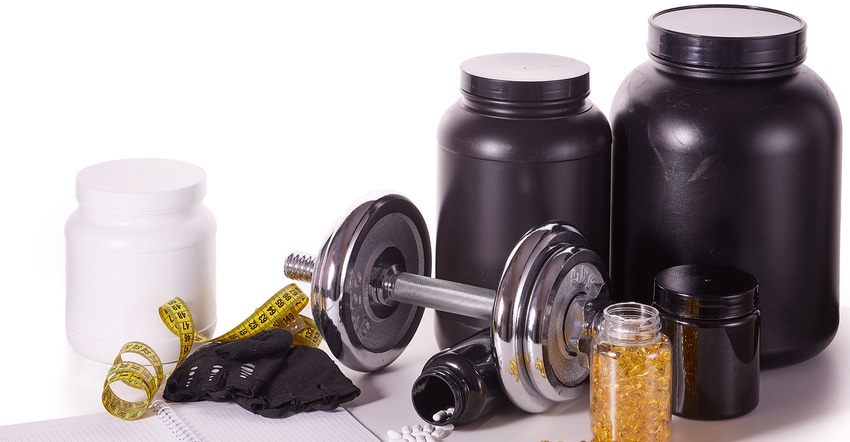The ambiguity of what constitutes prohibited substances for athletes leaves confusion for manufacturers trying to formulate sports nutrition products.

Banned-substance testing should be black or white; right or wrong; banned or legal. Instead, significant grey areas exist that are subject to interpretation or debate. The World Anti-Doping Association (WADA) Prohibited List and other banned substance lists relevant in professional or collegiate sport outline what substances are banned. If a substance is not listed, it would seemingly be acceptable. However, it’s not that simple.
Most prohibited-substance lists include catch-all language that may be used to consider substances that are not listed as banned. Snippets from the WADA Prohibited List below, often mimicked by other lists across sport, illustrate how the definition of what is banned can be somewhat infinite.
“and other substances with a similar chemical structure or similar biological effect(s)”
“including, but not limited, to”
Nootropics, a category of brain stimulants, illustrates the lack of clarity this language can create. Consumers and athletes seeking natural alternatives to things such as Adderall (amphetamine) often turn to nootropic supplements, not realizing some contain active ingredients that are Eastern European pharmaceuticals sold illegally as supplements. These adulterated products can lead to harm or abuse. Complicating matters, legal nootropic ingredients like rhodiola and ginseng are sold in the same category.
The nootropic drug fonturacetam, also known as phenylpiracetam, was added to the WADA Prohibited Substance List years ago. Nootropic websites often compare the effects of phenylpiracetam to Eastern European drugs like piracetam, aniracetam, oxiracetam, pramiracetam, noopept, phenibut and others. These could be interpreted as prohibited in sport under the “similar chemical structure or similar biological effect” language, yet the Global Drug Reference Online indicated piracetam is “not prohibited.” Many nootropic drugs may be interpreted as prohibited but are not yet treated as such.
Myostatin inhibitors are an expanding category of doping agents that further demonstrate the interpretational challenges. 2018 WADA Prohibited List language reads, “Agents modifying myostatin function(s) including, but not limited, to: myostatin inhibitors.” The WADA Prohibited List, as of 2019, now reads, “Myostatin inhibitors such as: Agents reducing or ablating myostatin expression; Myostatin-binding proteins (e.g., follistatin, myostatin propeptide); Myostatin-neutralizing antibodies (e.g., domagrozumab, landogrozumab, stamulumab).”
Examples have been added, clarifying what is included. Major League Baseball (MLB) instead prohibits “myostatin inhibitors” in general with no examples, leaving it up to interpretation what is covered. The 2018-19 National Collegiate Athletic Association (NCAA) Banned Drugs list surprisingly does not include myostatin inhibitors, or the broader WADA category of hormone and metabolic modulators, leaving it unclear whether myostatin inhibitors are prohibited.
Impacts on the nutrition industry stem from the addition of “agents reducing or ablating myostatin expression,” and the inclusion of “follistatin.” Follistatin is present in fertilized chicken yolks and is the primary ingredient in the supplement Yolked. Studies have shown that increases in follistatin lead to decreases in myostatin.1 Similarly, studies have shown that epicatechins, present in green tea and chocolate extracts, may decrease myostatin levels.2 While not listed, epicatechins could be interpreted as prohibited under the same logic as follistatin. The intent was likely to prohibit an injectable gene doping form of follistatin, known as AAV1-FS344, not foodstuffs. The new WADA language as written, however, prohibits follistatin, and potentially green tea or cocoa extracts by inference.
Insulin growth factor 1 (IGF-1) represents another paradox in banned-substance language, this time involving the form of the substance. IGF-1 is specifically prohibited throughout sport. As a doping agent, IGF-1 is administered by subcutaneous injection. When ingested, IGF-1 is metabolized and does not enter the bloodstream intact.3 The list language does not clarify the banned form or use, nor does it account for the many dietary sources of IGF-1. Meat, fish, cheese and eggs contain some amount of IGF-1. So do milk and whey.4 Whey protein, colostrum and deer antler supplements all contain IGF-1.
The lack of clarity on IGF-1 is manifested in lawsuits and contrasts in banned-substance list language. Recently, Vijay Singh settled a lawsuit with the PGA Tour that accused him of doping based on his admission to using a deer antler product. After calling Singh out as a doper, the PGA Tour consulted WADA, which determined the amount of IGF-1 in the product would not constitute a violation.
WADA FAQs add to the confusion, stating, “Deer antler sprays may contain IGF-1, which is a prohibited substance and has been included on the Prohibited List for many years. On the other hand, very small quantities of IGF-1 can be found naturally in animal products (e.g., colostrums, deer antler velvet).” The FAQ on colostrum indicated, “Colostrum is not specifically prohibited.” The 2018-19 NCAA Banned Drugs list includes the following: “IGF-1 (colostrum, deer antler velvet).” Whey protein is not mentioned by either group, though it is comparable.
In the case of IGF-1, it is the form of use that determines whether the substance is prohibited. Ingestible IGF-1 is not prohibited while subcutaneous injection is. When it comes to deer antler, sprays and droppers designed for sublingual absorption are often adulterated with specific doses of human IGF-1, making them illegal adulterated supplements and potential doping agents.5 Deer antler velvet powder, meanwhile, contains small amounts of natural deer IGF-1, making these legal supplements and acceptable for athletes.
These examples demonstrate the complexity in determining what substances are prohibited in sport. The issues may be complex to resolve, but they deserve further clarification so clear lines can be drawn as to the substances athletes or nutrition product formulators can use.
Oliver Catlin is president of BSCG (Banned Substances Control Group) a third-party certification and testing provider focused on banned substances, quality control and GMP (good manufacturing practice) compliance offering services to the nutrition and natural product industries.
References
Sharp M et al. “The Effects of a Myostatin Inhibitor on Lean Body Mass, Strength, and Power in Resistance Trained Males.” J Int Soc Sports Nutr. 2014;11(Suppl 1):P42. DOI: 10.1186/1550-2783-11-s1-p42.
Gutierrez-Salmean G et al. “Effects of (-)-epicatechin on molecular modulators of skeletal muscle growth and differentiation.” J Nutr Biochem. 2014 Jan;25(1):91-4. DOI: 10.1016/j.jnutbio.2013.09.007.
Mero A et al. “IGF-I, IgA, and IgG responses to bovine colostrum supplementation during training.” J Appl Physiol (1985). 2002 Aug;93(2):732-9.
Akbache A et al. “Use of Membrane Processing to Concentrate TGF-β2 and IGF-I from Bovine Milk and Whey.” J Memb Sci. 2009;326(2):435–440. DOI: 10.1016/j.memsci.2008.10.026.
Cox H, Eichner D. “Detection of human insulin-like growth factor-1 in deer antler velvet supplements.” Rapid Commun Mass Spectrom. 2013 Oct 15;27(19):2170-8. DOI: 10.1002/rcm.6678.
About the Author(s)
You May Also Like






.png?width=800&auto=webp&quality=80&disable=upscale)